China plans to mass produce humanoid robots in two years – here’s how experts think the tech will change the world by 2035
>
China has published plans to mass produce humanoid robots by 2025, as Western companies, including Elon Musk’s Tesla, race to produce their own humanoid robots.
DailyMail.com spoke to leading experts on how humanoid robots could change the world, with one expert saying the technology will grow “exponentially” this decade.
Goldman Sachs predicts that the market for humanoid robots will reach $150 billion annually around the world within fifteen years – and that humanoid robots will be viable in factories between 2025 and 2028, and in other jobs by 2030 to 2030. 2035.
Technology will have a positive impact in many areas, believes Marja Hook, author of Tech For Good, but people need to prepare for it.
How will robots change the world in 2035? (Rob Waugh/Midjourney)
Hook said forecasts indicate that up to a quarter of all jobs could be affected by robotics and artificial intelligence technology.
“My biggest concern is that all of humanity spends too much time in fear, rather than acceptance and expectation,” she said.
Research needs to be done now on what job roles will still “add value” in the world of humanoid robotics, Hook said: If we don’t train people, if we don’t anticipate, if we don’t radically change school programs, for example, we will be too late.
Elon Musk’s Tesla is building a competing robot called Optimus that aims to do any task a human can do — which Musk said could be “more important” than the company’s cars.
Robots will take care of the elderly
Hawke predicted that instead of human caregivers, humanoid robots will care for the elderly and young people with disorders such as autism.
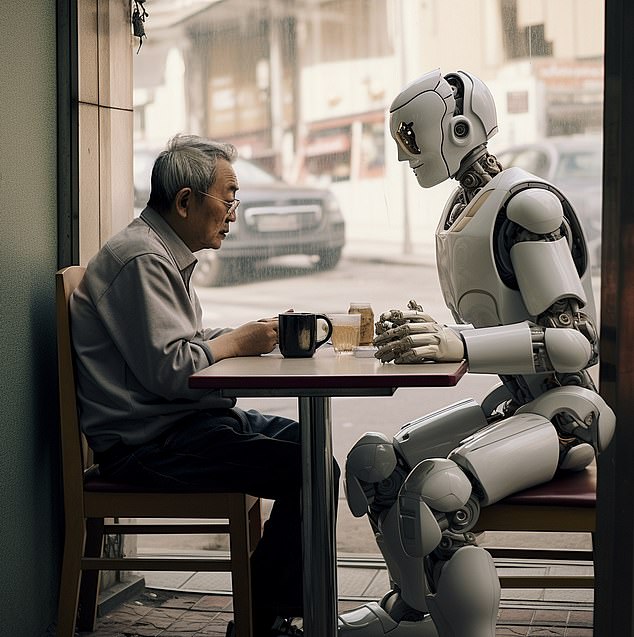
How will robots change the world in 2035? (Rob Waugh/Midjourney)
“We now have robots that also react to emotions and read behavior,” she said. We will have robots that deal with mental disorders and behavioral disorders with children as well as with adults.
“If we think about the elderly, their number is over 65. Robots can play a role in support and assistance, which also enables people to live longer.
Humanoid robots will work in factories and construction
Amazon this year tested a humanoid robot working in one of its centers, and experts believe that one day “lights out” in factories, without humans working, may be common.
By 2035, humanoid robots will have a “profound impact” on society and the global economy, said Lisa Farrell, director of business development at The National Robotarium.
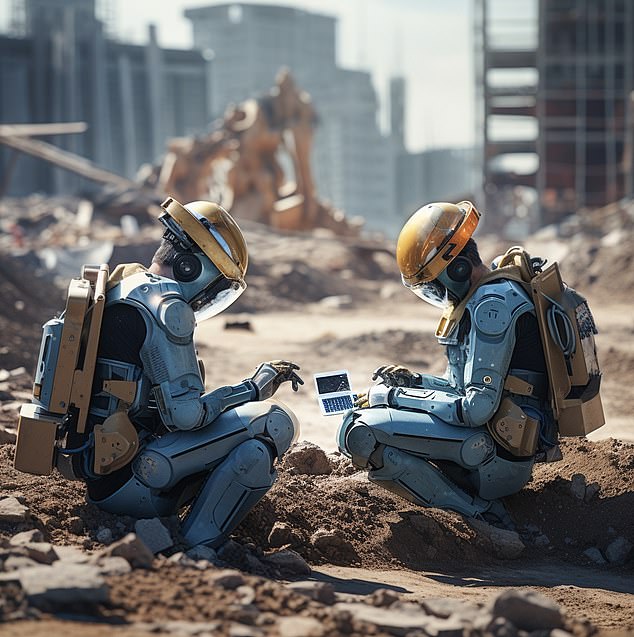
How will robots change the world in 2035? (Rob Waugh/Midjourney)
“Mass production of affordable robots can be achieved through economies of scale and advances in technology, and we expect all types of robots to support workforces in manufacturing, healthcare, construction, transportation, hospitality, and more,” Farrell said.
“Intelligent robots can increase productivity, improve quality control, and help carry out repetitive or dangerous tasks.
“Overall economic gains—McKinsey estimates an increase of close to $6 trillion globally by 2025—should arise from AI and robotics. New, high-value jobs in maintaining, programming, and collaborating with robots will also emerge.”
Robots will educate young people
The use of robotics in education is a fast-growing market, expected to reach $3.1 billion by 2025, Hawk said.
Robots can take on many different roles within classrooms, for example working as teaching assistants in schools, says Professor Angelo Cangelosi, professor of artificial intelligence and cognition at the University of Manchester.
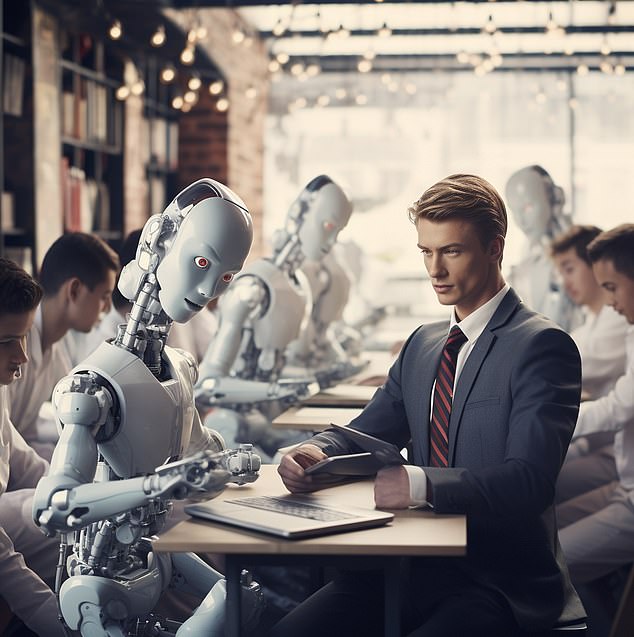
How will robots change the world in 2035? (Rob Waugh/Midjourney)
But Cangelosi says the next five to 10 years will see robots getting better at tasks like carrying small objects and having meaningful conversations, but it will take longer for “fully autonomous” humanoid robots to emerge.
“Robots can do some repetitive tasks more easily, but we will always need robotic technicians who will then monitor and service these robots,” Cangelosi said.
Gradual advances in robotics and artificial intelligence (due to the difficulty of the systems and capabilities being developed) will allow society time to plan for these changes.
I think we will see it gradually used in some sectors to support existing workers.
For example, humanoid robots could be used in flexible manufacturing plants, working with people to assemble equipment parts. They can also be used for social care, or also as educational aids in schools.
Robotic surgeons will save lives
Robotic surgeons will be revolutionary in remote areas (where they can perform specialized surgeries on people who might not otherwise have access) and on the battlefield.
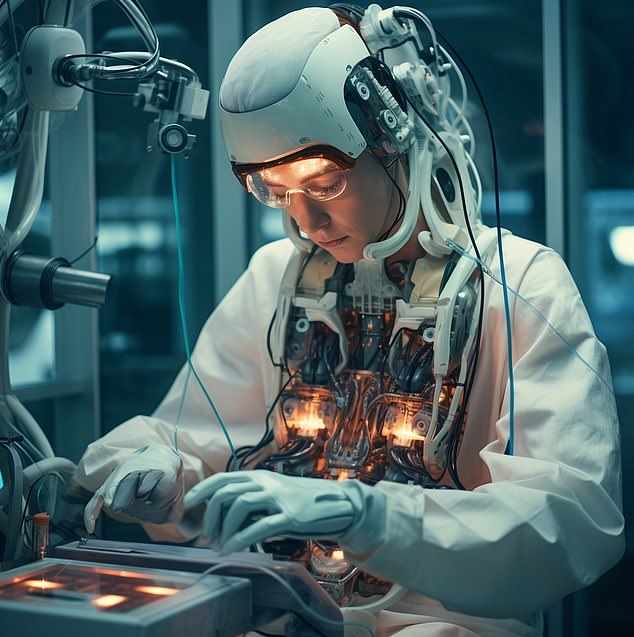
How will robots change the world in 2035? (Rob Waugh/Midjourney)
“If we use robots to perform microsurgery, they can do it,” Hook said. I mean much better than a human because human eyes and human fingers are limited in skills.
“So, if we use it to perform precise surgeries, it can do things that we couldn’t do.”
On the battlefield, the first 30 seconds after being hit are crucial in terms of survival, and not having to worry about getting hurt, Hawk said.
Robots will change agriculture
Hook believes robots will enable “precision agriculture” that will help deal with food shortages.
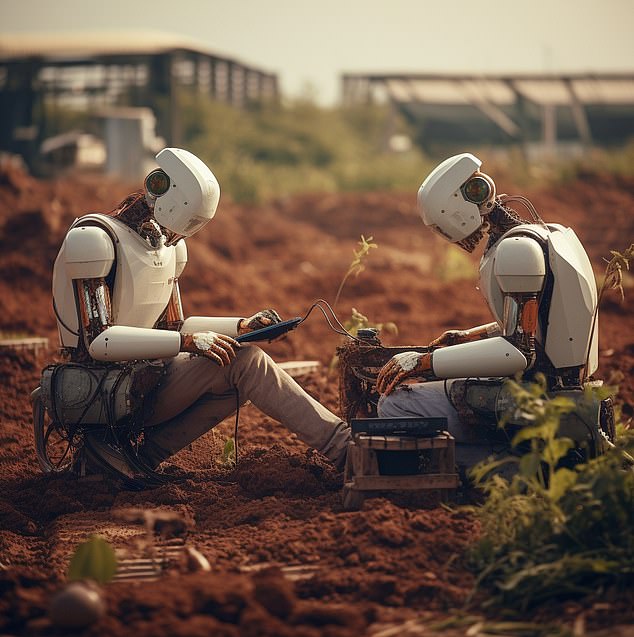
How will robots change the world in 2035? (Rob Waugh/Midjourney)
“There is a shortage of healthy food around the world, and the global population continues to grow,” Hook said.
“Robots can actually help boost production and do better precision farming and harvesting which can prevent food waste, because they can take things from point A to point B.”
(Tags for translation)dailymail
